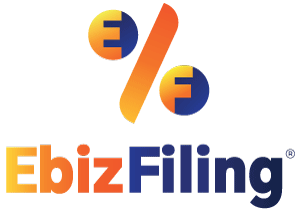
-
August 8, 2025
-
ByDhruvi D
Geographical Indications vs Trademarks
Introduction
In intellectual property law, there are two major ways to protect names, products, or services with a unique identity: Geographical Indications and Trademarks. Both help products stand out in the market, but they are used for different reasons.
What is Geographical Indication?
Geographical Indication is a sign or name used for products that come from a specific place and have special features because of that place. These qualities often come from local climate, soil, traditional skills, or specific regional methods of production.
For example, Darjeeling Tea is a GI product because it is grown only in specific regions and has distinct taste and quality.
In short, GI connects a product to its place of origin and shows that the product is authentic and unique for that location.
What is Trademark?
A trademark is a name, logo, word, or symbol that identifies the origin of a product or service. For example, the Nike ‘swoosh’ is a trademark. Trademarks help build brand recognition and trust. They can be owned by individuals, businesses, or legal entities and apply to any product or service.
Difference between Geographical Indication and Trademark
Both GI and Trademark protects names and identities but in different ways:
1. Ownership
- GI: Owned by group of local producers or an association from that area.
- Trademark: Owned by a person, company, or business that registers it.
2. Purpose
- GI: To protect region based products from being copied by outsiders.
- Trademark: To protect the brand identity so customers can tell one business from another.
3. Scope
- GI: Only applicable to products made in a specific geographical area with unique local features.
- Trademark: Can be used for any product or service, no matter where it comes from.
4. Duration
- GI: Lasts as long as the product keeps its special link to the region.
- Trademark: Needs to be renewed every 10 years to stay active.
5. Geographical Link
- GI: Strongly connected to specific location. Only products from that place can use the name.
- Trademark: Not connected to any place and can be used everywhere.
6. Examples
- GI: Basmati rice (India), Parmigiano Reggiano cheese (Italy).
- Trademark: McDonald’s (I’m lovin it), Apple (bitten apple logo).
7. Usage Criteria
- GI: The product must be made in the area and have features related to that place.
- Trademark: Can be used on any product or service by the owner, no matter the location.
8. Registration process
- GI: Registered with government body that handles regional product protection.
- Trademark: Registered with a country’s intellectual property by any person or business.
9. Transferability
- GI: Cannot be sold or transferred to anyone outside the region. It stays with the local group.
- Trademark: Can be sold, transferred, or licensed to others for business use.
10. Nature of Protection
- GI: Makes sure only true regional makers can use the name. Stops others from misusing it.
- Trademark: Stops others from using the same brand name or logo, keeping the brand unique.
Legal Framework
- GI are governed by Geographical Indications of goods(Registration & Protection) Act, 1999
- Trademarks are regulated under the Trade Marks Act, 1999 and its rules
Comparison Table: Trademark vs GI
| Feature | Trademark | Geographical Indication |
| Ownership | Individual or Company | Community or Producer Group |
| Scope | Brand Identity | Regional Product Origin |
| Transferability | Transferable | Non-transferable |
| Duration | 10 years (renewable) | 10 years (renewable) |
| Geographical Link | Not necessary | Essential |
| Global Use | Yes (via international filings) | Yes (via treaties like Lisbon Agreement) |
Geographical Indication Registration
Only groups or associations of local producers can apply
Application must include:
- Region map
- Proof of link between product and region
- List of authorised users
Process: After submission, the GI application undergoes examination, followed by publication in the GI Journal. If no objections are raised within the stipulated period, it proceeds to registration.
Time: Around 12 months to complete
Trademark Registration
Anyone can apply:
Process: Application check – Published in Trademark journal – 3 to 4 months for objections – Final Registrations
Time: 6 to 18 months
Conclusion
Geographical Indication and trademarks both protect product identities but serve different purposes. GIs protect region based products made by local groups, while trademark protect brand names and logos used by individual or businesses. While GIs are tied to a specific location, trademarks are not geographically restricted and can be used globally. By knowing the differences, it will help the businesses to choose the right protection for their product.
Suggested Read :
Trademark Registration Trends in India 2025
Recent Updates in Trademark Registration in India
FAQs on Trademark Registration
Types of Trademarks in India
Myths Related to Trademark Registration
FAQs
1. Can a Geographical Indication (GI) be sold or assigned to another business?
No. A Geographical Indication is non-transferable and cannot be assigned or licensed like a trademark. Only authorized producers from the registered geographical region can use the GI tag. It represents collective ownership, not individual rights.
2. What is the validity period of a registered trademark in India?
A trademark registration in India is valid for 10 years from the date of application. It can be renewed indefinitely in successive 10-year blocks as long as the mark is being used in commerce.
3. Is international protection available for Indian trademarks?
Yes. Indian trademarks can be protected internationally via systems like the Madrid Protocol. However, separate registration is required in each country, and protection is subject to local laws and approval.
4. Can a single product carry both a trademark and a GI?
Yes. A product can have both a GI and a trademark. The GI denotes origin and quality tied to location, while the trademark represents the brand identity or reputation of a specific business using the product.
5. Who can register a Geographical Indication in India?
A GI can be registered by any association of persons, producers, or an organization representing the interests of producers of goods from a particular region. Individuals cannot register a GI in their personal capacity.
6. What happens if a trademark is not renewed after 10 years?
If a trademark is not renewed within the stipulated time, it becomes liable for removal from the register. However, the owner has a grace period of 6 months to file a restoration and renewal request with late fees.
7. Can a GI be registered for non-agricultural or industrial products?
Yes. While many GIs are for agricultural goods (like Darjeeling Tea), GIs can also be registered for handicrafts, textiles, industrial goods, etc. Example: Channapatna Toys or Pochampally Ikat.
8. Is it mandatory to use a registered trademark in commerce?
Yes. Continued non-use of a registered trademark for over 5 years without valid reason can lead to cancellation upon request by a third party. Active use preserves rights and goodwill.
9. Are GIs considered intellectual property (IP) like patents and trademarks?
Yes. Geographical Indications are a form of intellectual property under the TRIPS Agreement and the Geographical Indications of Goods (Registration and Protection) Act, 1999 in India.
10. What is the difference between a trademark and a geographical indication?
A trademark is a private right that identifies a particular business or brand, while a GI denotes collective ownership and is tied to a specific region’s culture, climate, and traditional knowledge.
11. Who enforces trademark and GI rights in India?
The enforcement of both is handled through the Intellectual Property Appellate Board (IPAB) and courts of law. Customs and police authorities can also take action against counterfeiting and misuse.
12. Which authority governs the GI registration process in India?
The Geographical Indications Registry under the Controller General of Patents, Designs and Trademarks, operating under the Ministry of Commerce and Industry, manages GI registrations.
Register Your Trademark Online
Secure Your Brand Identity – Register Your Trademark Online Easily with EbizFiling!
About Ebizfiling -










September 10, 2025 By Dhruvi D
Can we apply for Logo and Wordmark Registration in Single Application? Introduction Businesses often wonder whether they can register both their logo and wordmark in one trademark application to save costs and simplify the process. Under Indian Trademark Law, it […]
September 10, 2025 By Dhruvi D
Can I Use Different Colour Combinations After Applying Logo as a TM Application? Introduction When it comes to protecting your brand identity, every detail matters, including the colours in your logo. Many business owners are curious if they can change […]
August 4, 2025 By Dhruvi D
Can You Legally Own an AI-Generated Brand Name in India? More and more Indian startups, influencers, and creators are turning to tools like ChatGPT, Namelix, and Shopify’s AI business name generators to craft brand names. But the question remains: Can […]